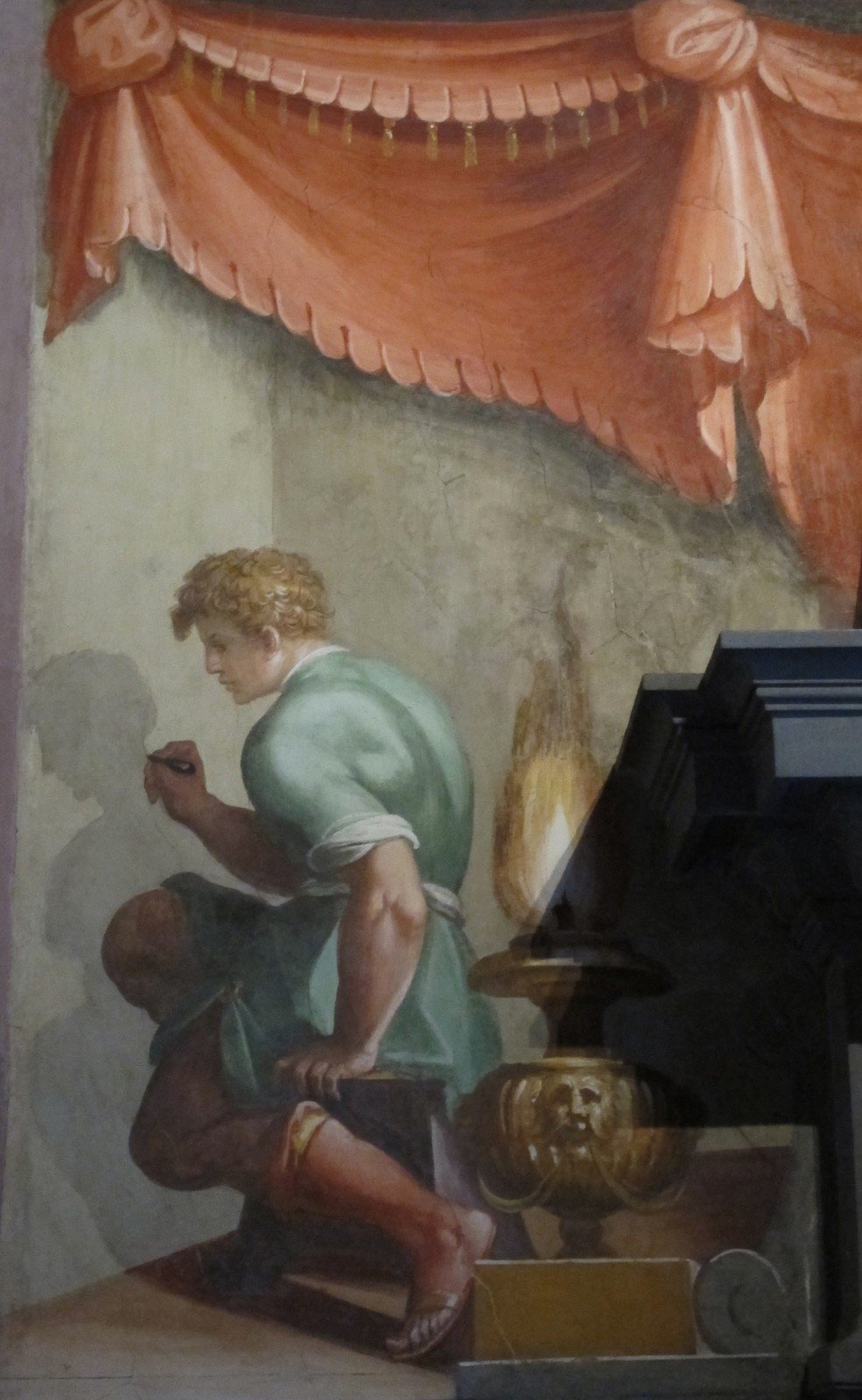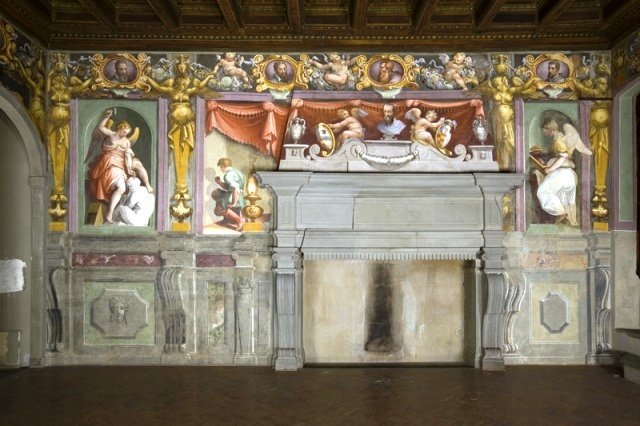Art in the mirror with Giorgio Vasari, Ugo Mulas and Jasper Jones
- Ugo Mulas, “Jasper Johns”, New York, 1967. Fotografie Ugo Mulas © Eredi Ugo Mulas. All right reserved. Courtesy Archivio Ugo Mulas, Milano – Galleria Lia Rumma, Milano/Napoli
- Giorgio Vasari, “Self-portrait”, ca. 1561-1569, fresco, Casa Vasari, Firenze
- Giorgio Vasari, “Self-portrait”, ca. 1561-1569, fresco, Casa Vasari, Firenze
In the preface of his “Lives”, Giorgio Vasari (Arezzo, 1511 – Firenze 1574) says that art began when someone drew the shadow of a man projected on a wall. Necessarily, that shadow was casted by the artist who outlined it. In his self-portrait, Vasari depicted himself as the first painter. It can be seen in a fresco painted between 1561 and 1569 on a chimney of Casa Vasari in Florence, specifically on the north west wall of the Sala Grande.The words and the self-portrait by Vasari are perfect metaphors for a concept that has fascinated critics for many centuries, namely the idea that every artist paints himself.
The self-portrait by Vasari has a surprising affinity with a photo where the italian photographer Ugo Mulas (1928 – 1973) captures the american artist Jasper Jones (born in 1930) while working on a large canvas – the picture will be exhibited in Brescia in the show “Ugo Mulas. Photography”, Museum Santa Giulia, from 16 April to 13 July-. It is very likely that Mulas considered that picture as a result of a conceptual and critical reflection on the work by Jasper Jones. However, beyond the coincidence between the two works, it is interesting to note that already in the words of Vasari, describing the first artistic manifestations in history, the philosophical aspect was not separated from the pictorial. And that is to say that art has always looked at itself with an approach that today we might call Conceptual.
Secondo che scrive Plinio, quest’arte venne in Egitto da Gige Lidio, il quale, essendo al fuoco e l’ombra di se medesimo riguardando, subito, con un carbone in mano, contornò se stesso nel muro; e da quella età, per un tempo, le sole linee si costumò mettere in opera senza corpi di colore, sì come afferma il medesimo Plinio; la qual cosa da Filocle Egizzio con più fatica, e similmente da Cleante et Ardice Corintio e da Telefane Sicionio fu ritrovata. Cleofante Corintio fu il primo appresso de’ Greci che colorì, et Apollodoro il primo che ritrovasse il pennello. Seguì Polignoto Tasio, Zeusi e Timagora Calcidese, Pitio, et Aglaufo, tutti celebratissimi; e, dopo questi, il famosissimo Apelle, da Alessandro Magno tanto per quella virtù stimato et onorato, ingegnosissimo investigatore della Calumnia e del Favore, come ci dimostra Luciano, e, come sempre fur quasi tutti i pittori e gli scultori eccellenti, dotati dal cielo, il più delle volte, non solo dell’ornamento della poesia, come si legge di Pacuvio, ma della filosofia ancora, come si vede in Metrodoro, perito tanto in filosofia quanto in pittura, mandato dagli Ateniesi a Paolo Emilio per ornare il trionfo, che ne rimase a leggere filosofia a’ suoi figliuoli.
Giorgio Vasari – Le vite de’ più eccellenti architetti, pittori, et scultori italiani, da Cimabue insino a’ tempi nostri (1568) – Proemio delle Vite
September 22, 2014



